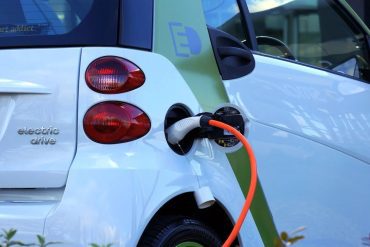Worldwide Car Sales by Country & Region - Annual Reports
Over the last decade, worldwide car sales have experienced notable trends and changes.
International Automotive Markets - Regional Sales Figures & Reports
In this section of the site, you can find automotive sales data since 2005 for virtually every country in the world, broken out at the regional level. Please note these statistics are NOT Total Market Volumes, which include passenger cars as well as light commercial vehicles (LCVs). These statistics are strictly for Passenger Cars, which excludes LCVs. Apart from European and North American countries, these figures come from unofficial sources and can vary slightly from other data you may find elsewhere. Despite our best efforts to find the most reliable data, we can’t guarantee 100% accuracy, but we are confident the provided data is sufficiently indicative of the size and trend of the market.
European Auto Industry Sales Figures - Annual Reports
Following the global financial crisis of 2008-2009, the European car market experienced a significant decline in sales. However, in the years that followed, the market gradually recovered, with a steady increase in sales. Similar to global trends, there has been a growing interest in alternative powertrain technologies in Europe. Electric vehicles (EVs) and plug-in hybrid vehicles (PHEVs) have gained popularity, driven by government incentives, stricter emissions regulations, and increased environmental awareness. Several European countries have set ambitious targets to phase out internal combustion engine (ICE) vehicles in the coming years. Diesel-powered vehicles, which were once popular in Europe, faced a decline in sales due to stricter emissions standards and the diesel emissions scandal that emerged in 2015. Like other regions, there has been a significant increase in the demand for SUVs and crossovers in Europe. The COVID-19 pandemic had a significant impact on European car sales, as lockdowns, economic uncertainties, and supply chain disruptions affected consumer demand. At the country level, Germany, the largest car market in Europe, has seen relatively stable sales, while countries like the UK, France, and Italy have experienced fluctuations.
North America Auto Industry Sales Figures - Annual Reports
Following the global financial crisis of 2008-2009, the North American automotive industry faced a severe downturn in sales. However, in subsequent years, the market gradually recovered, driven by economic improvements, low-interest rates, and consumer confidence. One of the prominent trends in North American car sales has been the increasing demand for light trucks, including pickup trucks, SUVs, and crossovers. The United States, the largest car market in North America, experienced a strong rebound in car sales over the past decade. Factors such as improving employment rates, favorable lending conditions, and the need for vehicle replacements contributed to this resurgence. However, the market has experienced some fluctuations due to factors like trade disputes, economic uncertainties, and the impact of the COVID-19 pandemic. Like other regions, the adoption of electric vehicles (EVs) has gained momentum in North America. While the United States dominates the market, Canada and Mexico also contribute significantly.
South America Auto Industry Sales Figures - Annual Reports
South America has experienced economic volatility over the last decade. Countries like Brazil and Argentina, which are significant car markets in the region, have faced periods of recession and economic uncertainty. Brazil is the largest car market in South America and has a significant influence on the region's car sales. Other key markets in the region include Argentina, Colombia, Chile, and Peru. Governments in South America have implemented various policies and incentives to stimulate car sales and support the automotive industry. These include tax breaks, subsidies, and financing programs aimed at promoting vehicle purchases. Additionally, some countries have introduced regulations to encourage the production and use of flex-fuel vehicles, which can run on ethanol or gasoline. In periods of economic growth and stability, car sales tend to rise, while recessions and economic downturns can lead to rapid declines in sales. South American consumers have traditionally shown a preference for smaller and more affordable cars, such as compact models. This preference is often driven by factors like fuel efficiency, affordability, and practicality in congested urban environments.
Asia Auto Industry Sales Figures - Annual Reports
In the last decade, China emerged as the largest car market in Asia and the world. With its rapid economic growth, rising middle class, and increasing urbanization, China has experienced a substantial increase in car sales. However, in recent years, the Chinese car market has shown signs of slowdown due to economic factors and changes in government policies. Southeast Asian countries, such as Indonesia, Thailand, Malaysia, and Vietnam, have seen substantial growth in car sales. Favorable economic conditions, increasing disposable incomes, and expanding middle-class populations have contributed to this growth. Asian countries have shown a strong inclination towards electric vehicles (EVs) in recent years. Government initiatives, incentives, and stricter emission regulations have propelled the growth of EV sales in countries like China, Japan, and South Korea. Asian countries have been experiencing rapid urbanization, resulting in increased demand for personal mobility solutions.
Africa Auto Industry Sales Figures - Annual Reports
The African car market has shown potential for growth over the past decade. Increasing urbanization, improving economic conditions, and a rising middle class have contributed to the demand for automobiles. However, the market is relatively small. In Africa, the market is largely dominated by used cars as affordability plays a crucial role in consumer choices. Chinese automakers have gained a significant presence in the African car market over the last decade. Chinese manufacturers offer affordable vehicles tailored to the needs and budgets of African consumers. They have been successful in capturing market share, especially in countries like Nigeria, Ethiopia, and Kenya. Limited road infrastructure, inadequate public transportation systems, and a lack of accessible financing options have been challenges to car sales in Africa. These factors can hinder market growth, particularly in rural areas. North African countries, such as Morocco and Egypt, have a more developed automotive industry and higher car sales compared to other regions. Sub-Saharan African countries, including Nigeria, South Africa, and Kenya, have significant car markets with their unique dynamics and preferences.
Australia / Oceania Auto Industry Sales Figures - Annual Reports
Australia is the largest car market in the Oceania region. The Australian automotive industry has seen stable growth over the last decade, with car sales influenced by economic conditions, consumer preferences, and government policies. ike many other regions, there has been a significant shift in consumer preferences towards SUVs and light commercial vehicles (LCVs) in Australia and Oceania. Traditional sedan sales in Australia and Oceania have faced a decline, reflecting a global trend. Electric vehicles (EVs) have gained traction in Australia and Oceania, albeit at a slower pace compared to some other regions.


































































